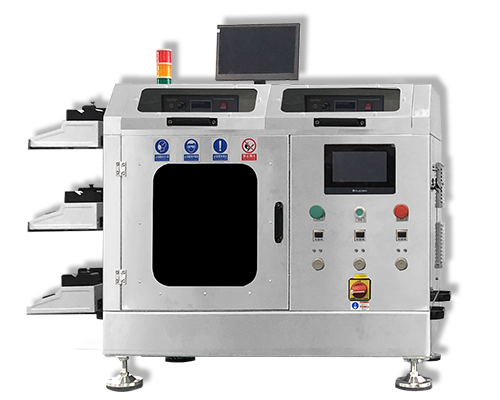Laser Processing Heart Stent
High-precision laser processing behind the industrialization of cardiac stents
Behind the jump in the price of heart stents is the common support of the medical industry and policies, and there is a more important point: laser processing is more and more applied to the medical industry due to its unique advantages, solving the problems that cannot be overcome by traditional processing. Helping the technological innovation and upgrading of industrial heart stent processing.
Cardiac stents first appeared in the 1980s, also known as coronary artery stents, are equipment used for percutaneous coronary intervention (PCI), and are one of the three main methods for the treatment of coronary heart disease. The diameter of the heart stent is only 2-4 mm, and the weight is less than one ten-thousandth of a gram. It is a relatively direct and effective tool for acute myocardial infarction. It can follow the blood vessels to the position where the coronary artery is blocked, and quickly open the blocked blood vessels, so as to restore and maintain the normal flow of blood for a long time.
Since the heart stent is directly implanted in the human body, in-depth research must be carried out on the use characteristics and safety, and extremely stringent conditions must be met. Such as flexibility, antithrombotic, biocompatibility, supporting force and other requirements. Heart stents have extremely thin-walled tubes that require precision laser cutting to create. The use of ordinary laser processing will lead to problems such as many burrs in the heart stent and inconsistent groove width, so the heart stent produced in this way cannot meet the conditions of use.
In recent years, some companies have begun to use femtosecond lasers for stent cutting. Femtosecond laser refers to a laser with a time-domain pulse width of femtosecond (femtosecond, 10^-15 seconds). The strong electric field generated by the short pulse of femtosecond laser eliminates the free electrons near the tangent point of the material, makes the positively charged material repel with the same sex, loses the intermolecular force, and completes the material removal by “molecular removal”. The section of the heart stent processed in this way has no burrs, smooth surface, no heat loss and no ablation, high cutting precision and uniform rib width.
Absorbable stents are processed and manufactured using ultrafast lasers to minimize the thermal effect of laser beam energy on the stent material. However, the current ultrafast laser micro-nano-fabricated absorbable vascular stents are expensive and have low yields. How to use this technology to realize the industrialization of vascular stents is a difficult problem that researchers need to solve urgently.
The ultrasonic drug-eluting stent spray coating system can be applied to the preparation of polymer coating for preventing vascular restenosis on the surface of implantable drug-eluting stent. Compared to conventional two-fluid nozzles, ultrasonic nozzles can spray a more uniform drug coating that completely covers the stent without the orange peel and adhesion to a complex stent. The soft atomized spray adheres well to surfaces and coating morphology characteristics can be adjusted by modifying process parameters. In addition, the stent coating obtained by ultrasonic spray coating technology is thinner than dip-coating. Ultrasonic spray coating technology can precisely control the amount of drug sprayed on the stent, making the control of the spraying more precisely.
The special nozzle for ultrasonic stent with national patent can realize accurate application of medicine, and the fixture specially equipped for stent is convenient for loading and unloading. This device has the characteristics of supporting multiple series and multiple types of stents, high drug utilization, accurate drug delivery, and high uniformity of the stent membrane layer.
Chinese Website: Cheersonic Provides Professional Coating Solutions


